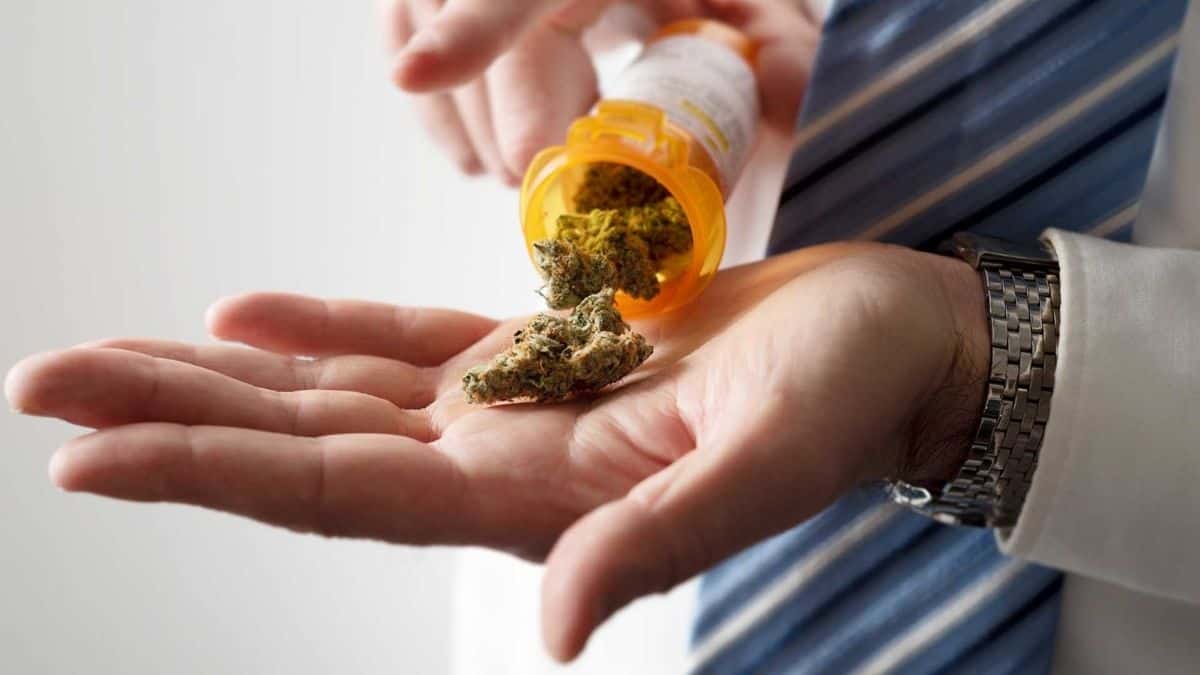Can Weed cure COVID-19 or Coronavirus? Lets find out

Hemp chemicals discovered by Oregon State University researchers using a chemical screening technique developed at the university show promise in preventing the virus that causes COVID-19 from infecting human cells.
The findings of a study led by Richard van Breemen of Oregon State University’s Global Hemp Innovation Center, College of Pharmacy, and Linus Pauling Institute were published in the Journal of Natural Products today.
Multiple hemp extracts and compounds are added to cosmetics, body lotions, dietary supplements, and food, according to van Breemen. Hemp, scientifically known as Cannabis sativa, is a source of fibre, food, and animal feed, and multiple hemp extracts and compounds are added to cosmetics, body lotions, dietary supplements, and food.
Van Breemen and colleagues, including Oregon Health & Science University scientists, discovered that a pair of cannabinoid acids link to the SARS-CoV-2 spike protein, preventing the virus from infecting individuals.
The spike protein is the same therapeutic target utilised in COVID-19 vaccinations and antibody treatment, and the chemicals are cannabigerolic acid (CBGA) and cannabidiolic acid (CBDA). A pharmacological target is any molecule that is required for the progression of a disease and whose disruption can halt infection or disease progression.
According to van Breemen, “these cannabinoid acids are plentiful in hemp and various hemp preparations.” “Unlike THC, the psychoactive element in marijuana, they are not restricted substances and have an excellent safety profile in humans.” And our research found that hemp components were similarly effective against SARS-CoV-2 variants, including variant B.1.1.7, which was originally discovered in the United Kingdom, and variant B.1.351, which was first discovered in South Africa.”
These two types are referred to as alpha and beta, respectively.
SARS-CoV-2, which has crown-like protrusions on its outer surface, has RNA strands that encode four key structural proteins – spike, envelope, membrane, and nucleocapsid – as well as 16 nonstructural proteins and a few “accessory” proteins, according to van Breemen.
“Any element of the infection and replication cycle is a viable target for antiviral intervention,” he said, adding that the spike protein’s receptor binding domain’s interaction to the human cell surface receptor ACE2 is a crucial step in the cycle. “This suggests that cell entry inhibitors, such as hemp acids, could be employed to prevent SARS-CoV-2 infection as well as shorten infections by stopping virus particles from invading human cells.” They bind to the spike proteins, preventing the ACE2 enzyme from binding to the outer membrane of endothelial cells in the lungs and other organs.”
Other viral illnesses, such as HIV-1 and hepatitis, have benefited from the use of drugs that disrupt virus-receptor contact, he says.
Van Breemen, Ruth Muchiri of the College of Pharmacy and Linus Pauling Institute, and five OHSU scientists used a mass spectrometry-based screening technique developed in van Breemen’s group to identify the two cannabis acids. Red clover, wild yam, hops, and three varieties of licorice were among the botanicals tested by Van Breemen’s team as dietary supplements.
An earlier work published in the Journal of the American Society for Mass Spectrometry showed how affinity selection mass spectrometry was used to uncover medicines that target the SARS-CoV-2 spike protein.
Lab studies revealed that cannabigerolic acid and cannabidiolic acid blocked infection of human epithelial cells by the coronavirus spike protein, as well as the entry of SARS-CoV-2 into cells, in later research.
Van Breemen remarked, “These chemicals may be taken orally and have a long history of safe use in humans.” “They have the potential to both prevent and treat SARS-CoV-2 infection.” The hemp plant produces CBDA and CBGA as precursors to CBD and CBG, which are well-known to most users. They are, however, distinct from acids and are not found in hemp products.”
Van Breemen says that affinity selection mass spectrometry, or AS-MS, entails incubating a therapeutic target, such as the SARS-CoV-2 spike protein, with a variety of potential ligands, such as a botanical extract, in this case hemp extract.
The non-binding molecules are subsequently screened out of the ligand-receptor complexes using one of several techniques.
Van Breemen explained, “We identified numerous cannabis ligands and rated them by affinity to the spike protein.” “CBDA and CGBA were the two cannabinoids with the highest affinity for the spike protein, and they were confirmed to prevent infection.”
“One of the main worries in the pandemic is the spread of variations, and B.1.1.7 and B.1.351 are two of the most common and alarming,” he noted. “These variants are known to evade antibodies against early lineage SARS-CoV-2, which is alarming given that current immunisation efforts use the early lineage spike protein as an antigen.” Our findings demonstrate that CBDA and CBGA are effective against the two variations we studied, and we expect this trend to continue with additional current and future variants.”
Van Breemen noted that while resistant variations could emerge due to widespread use of marijuana, the combination of vaccination and CBDA/CBGA treatment should make SARS-environment CoV-2’s considerably more difficult.
“In previous research, we discovered another chemical, one derived from licorice, that attaches to the spike protein as well,” he explained. “However, we haven’t tested that compound, licochalcone A, against the live virus yet.” For that, we’ll need new cash.”
The cannabinoid study also included contributions from OHSU’s Timothy Bates, Jules Weinstein, Hans Leier, Scotland Farley, and Fikadu Tafesse.


